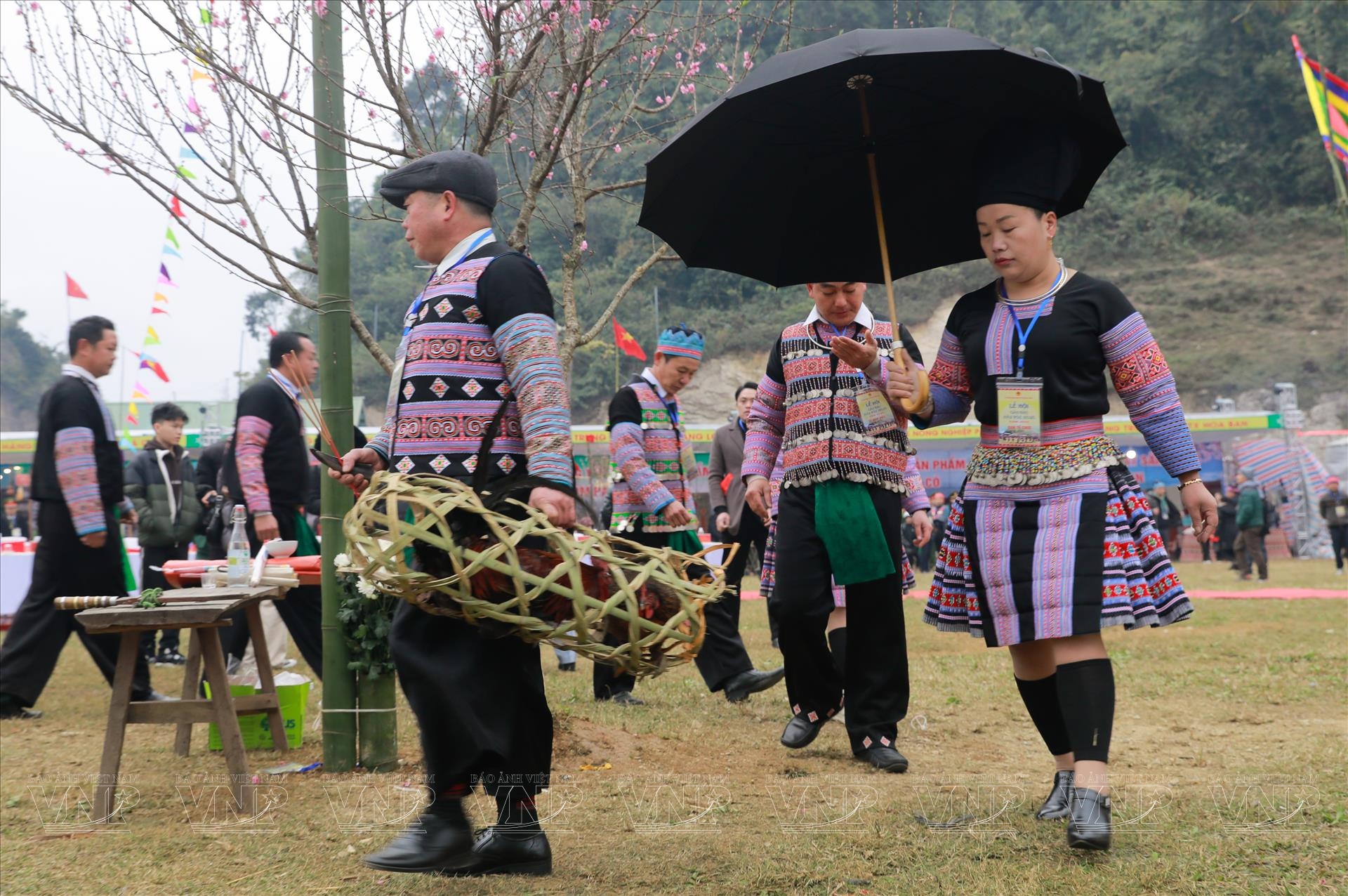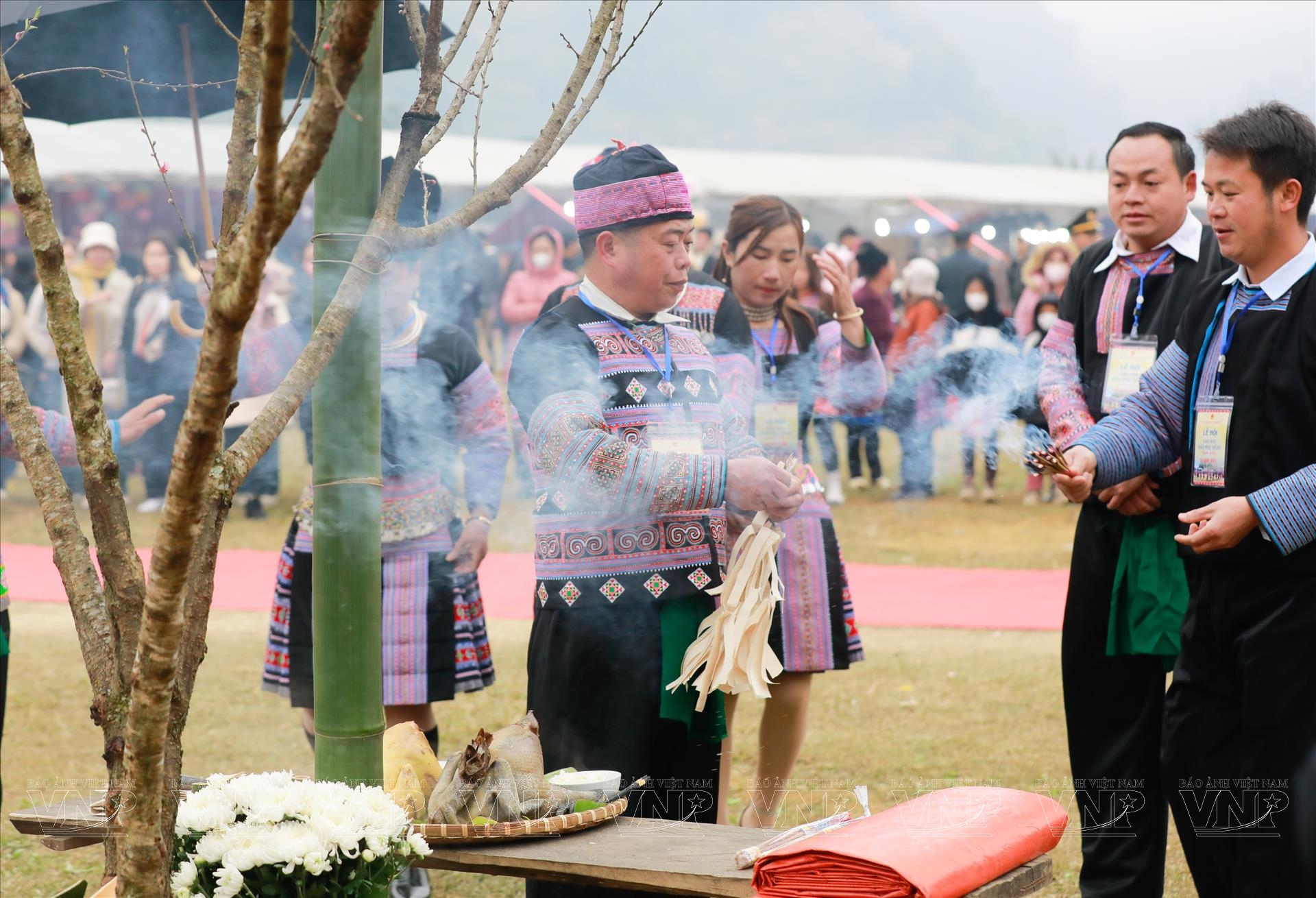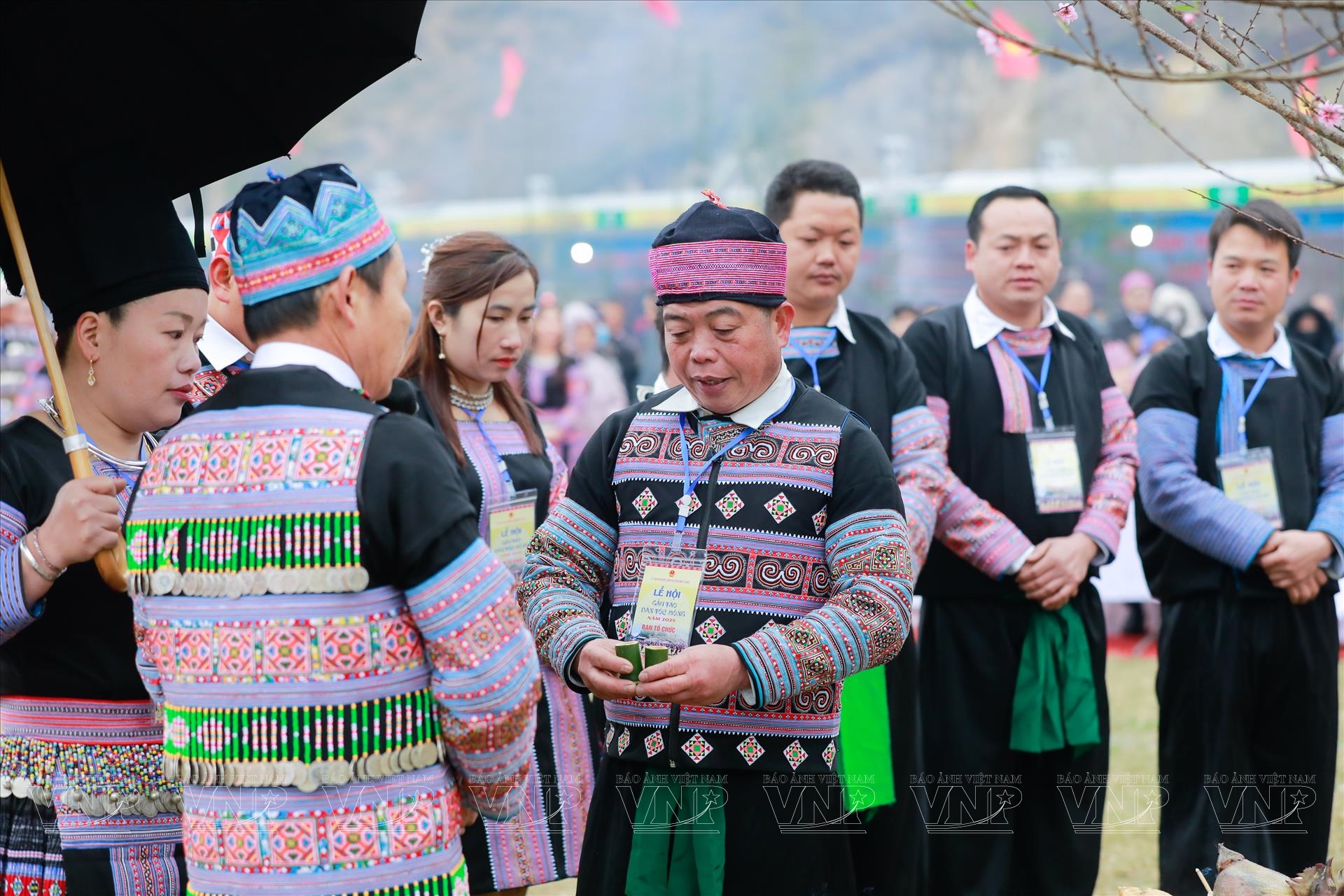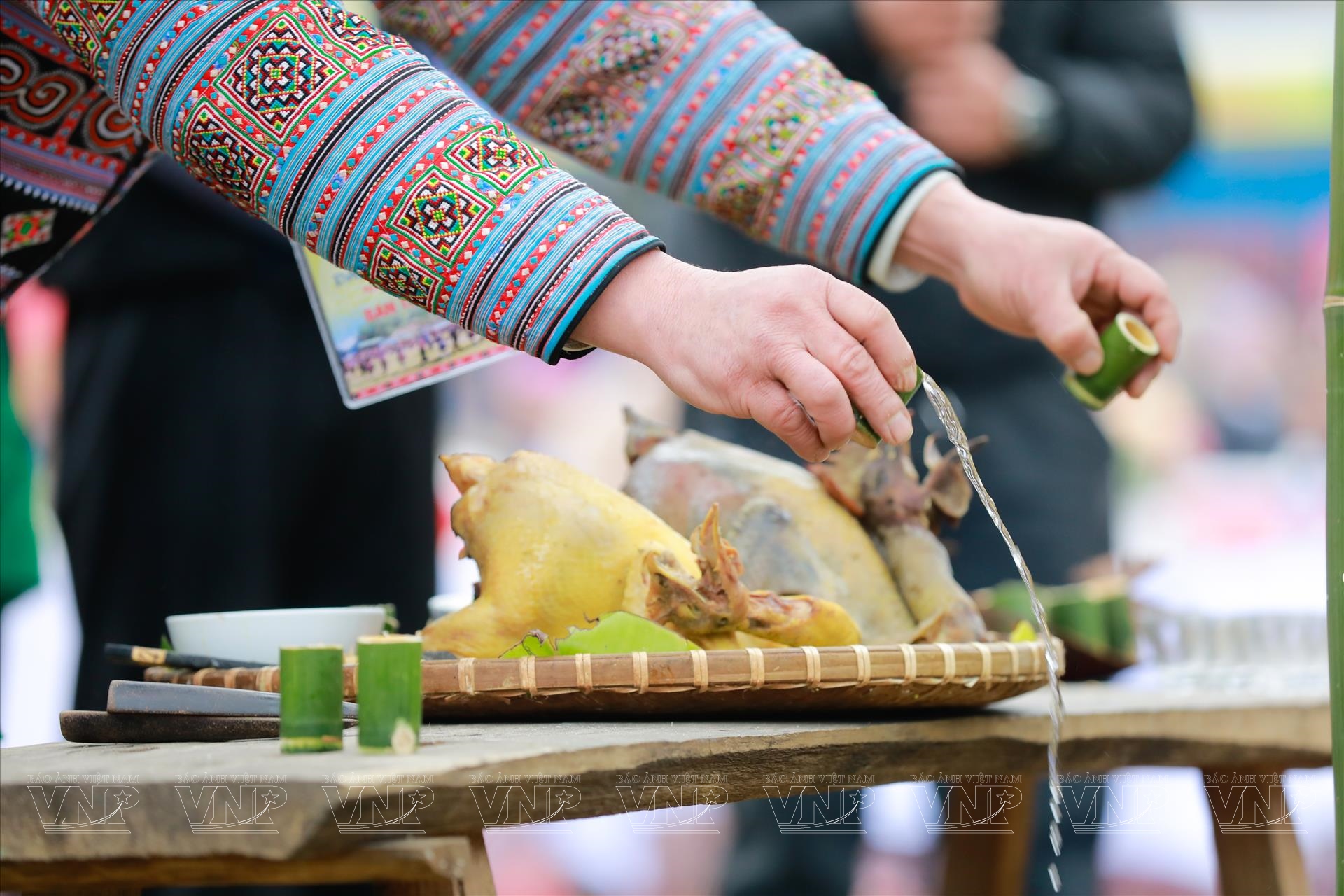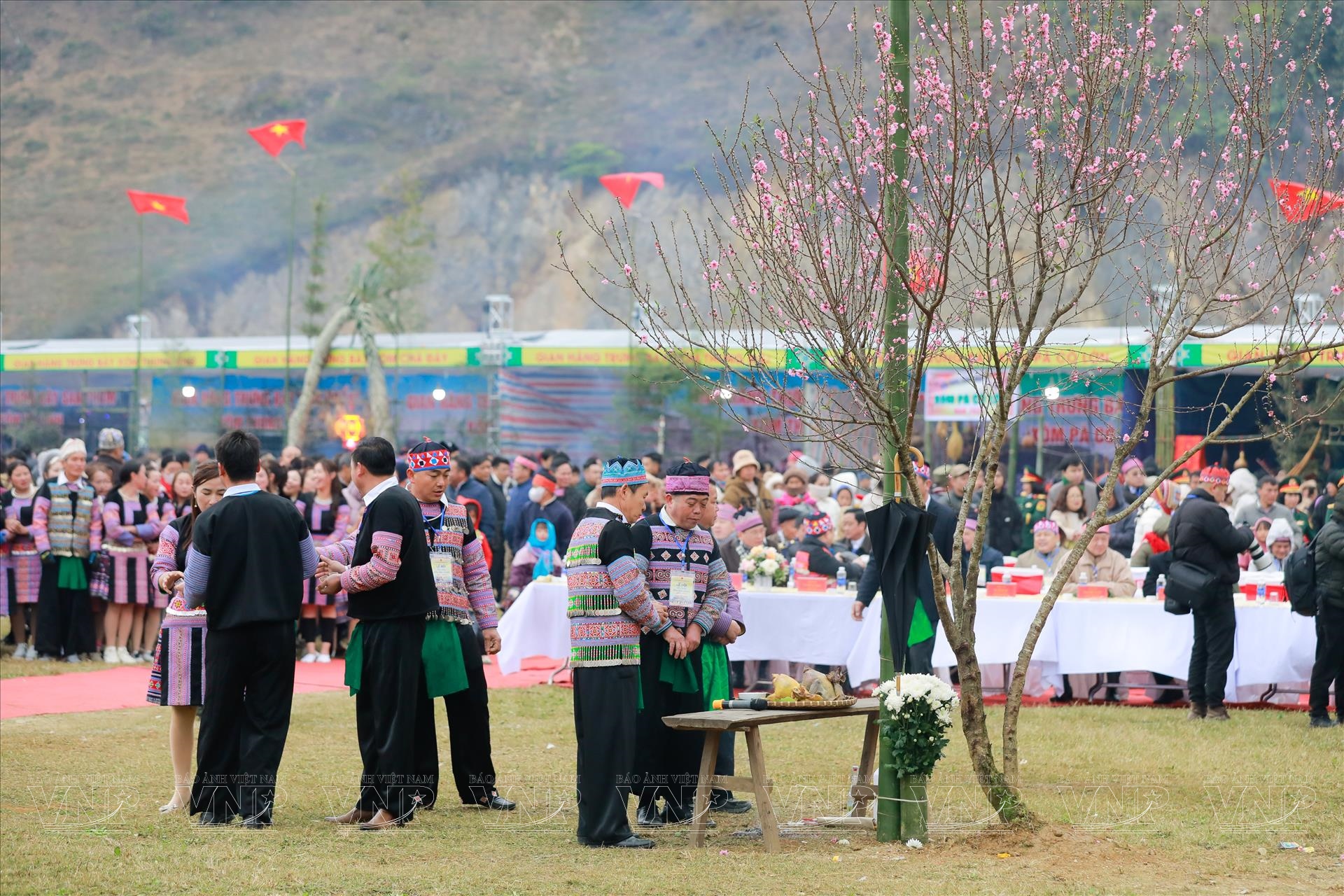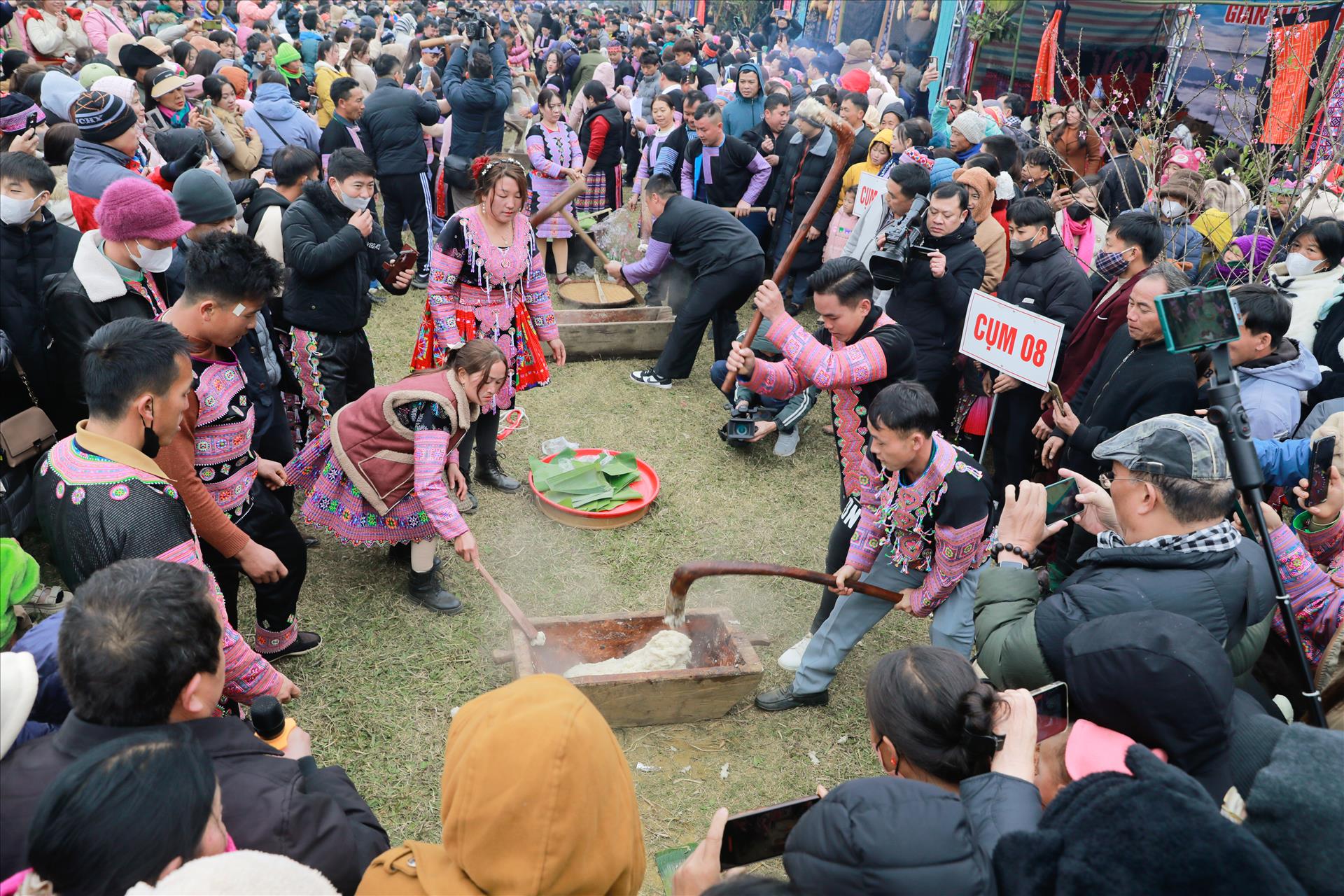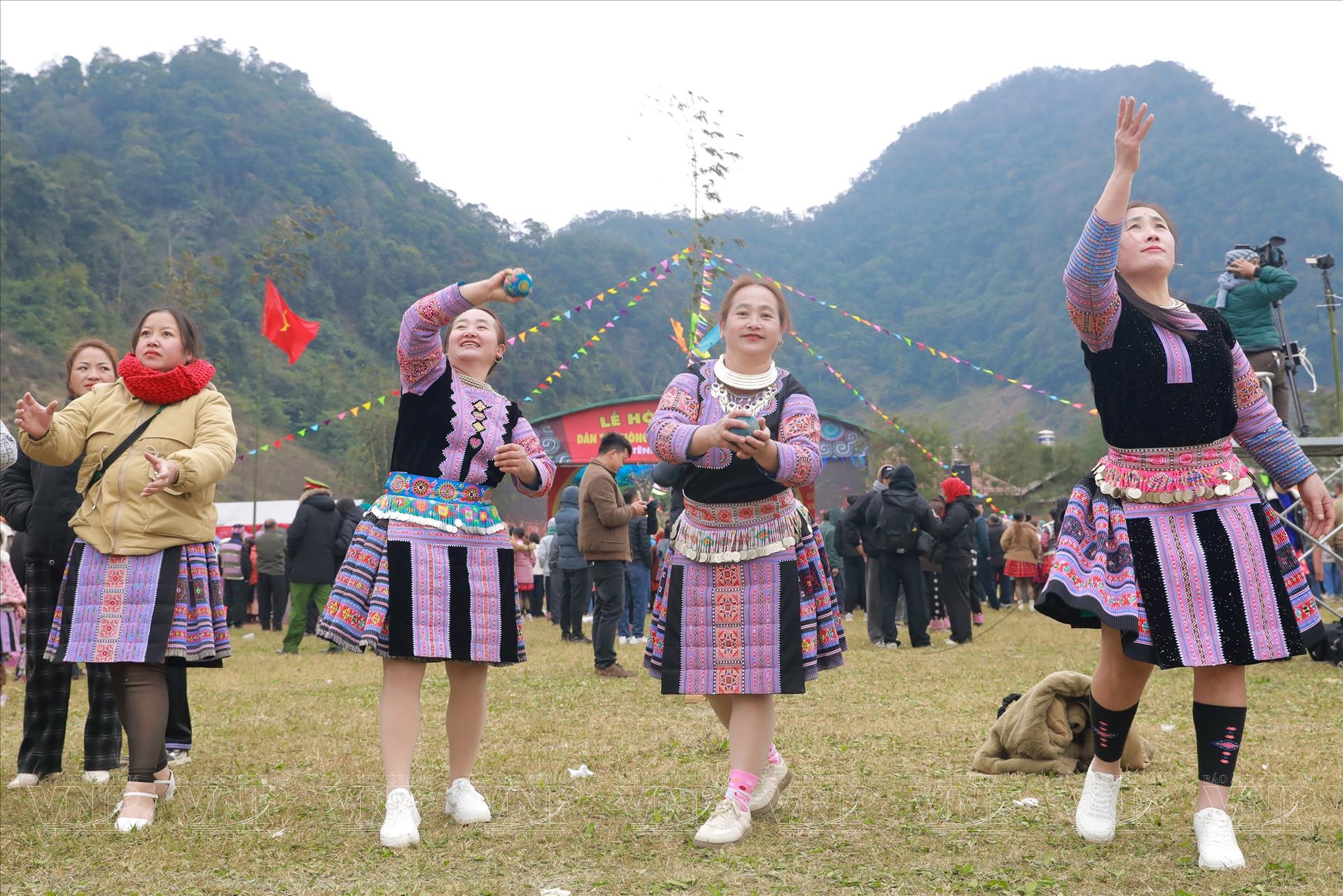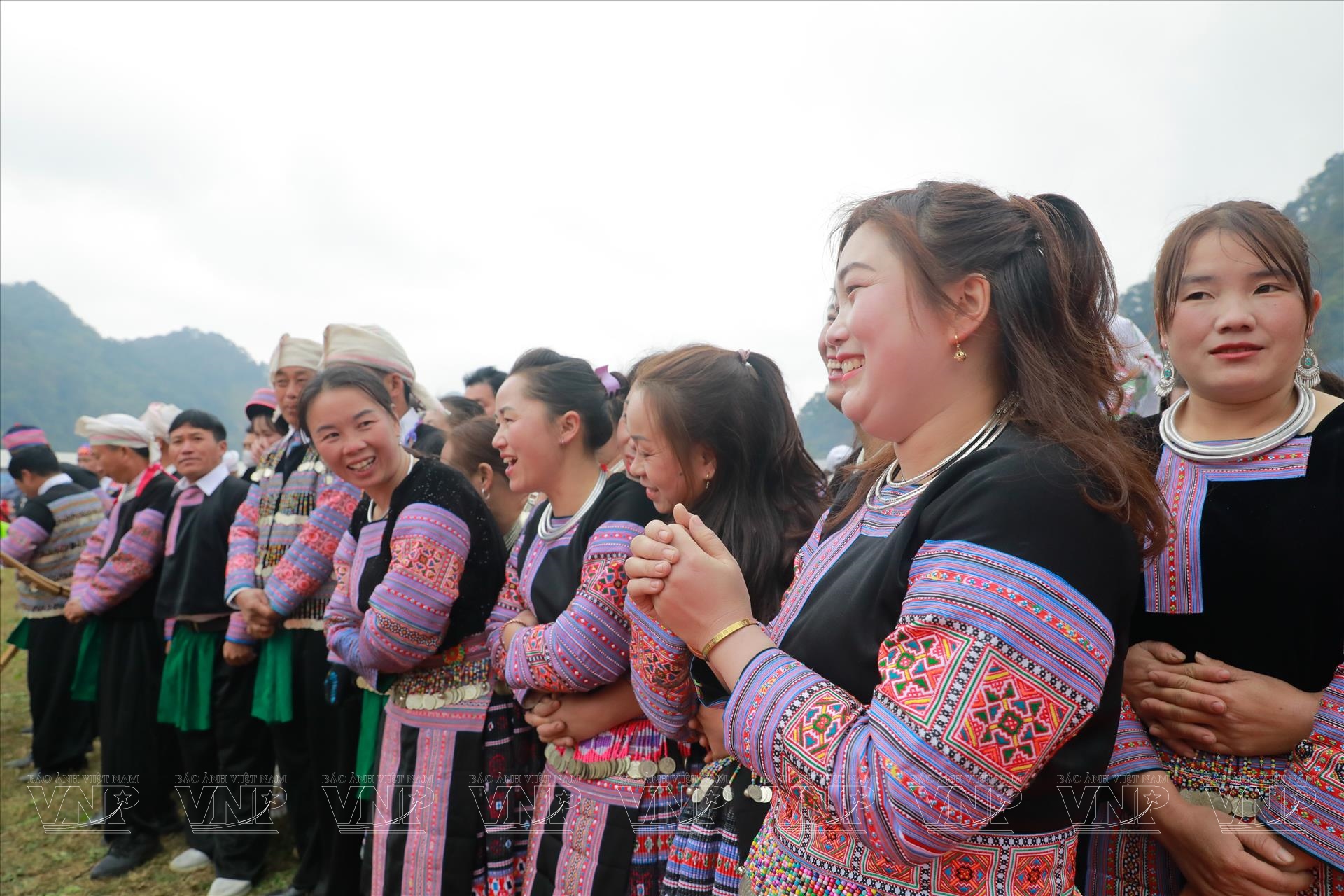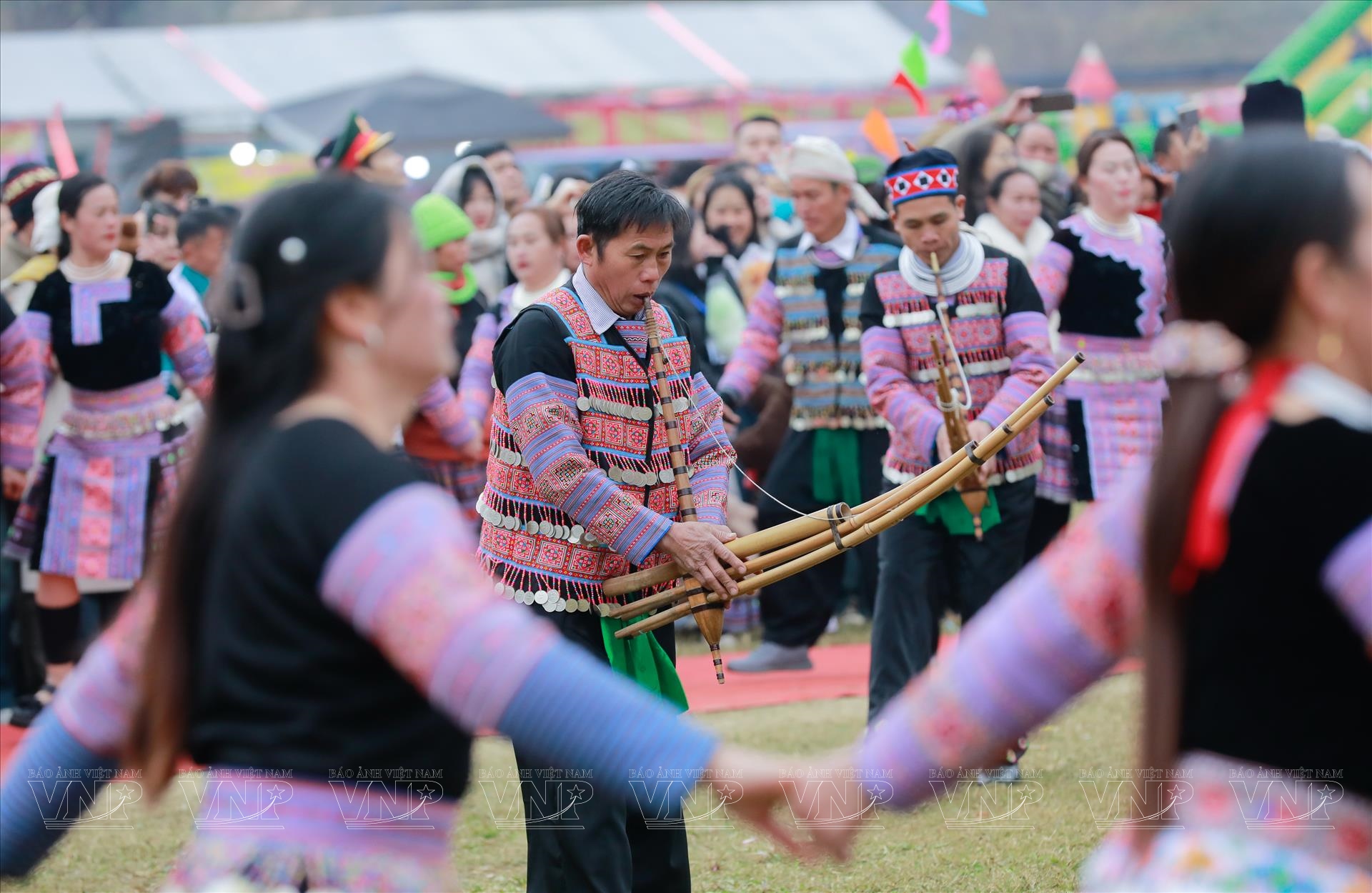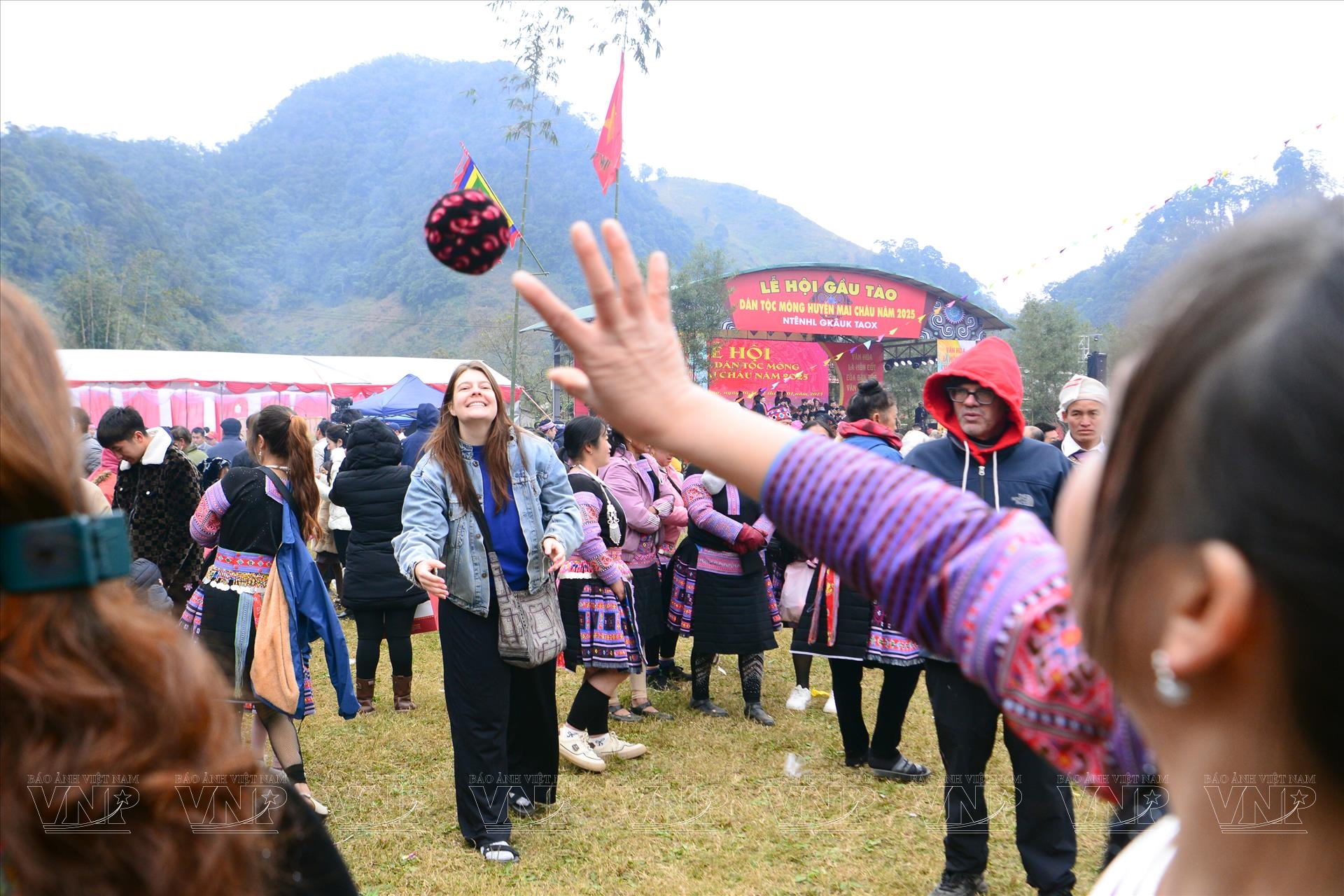Gau Tao - A Vibrant Celebration of Hmong Culture
In the Hmong language, "Gau Tao" means playing outdoors or playing on a hill. Originally, the festival was a private family ceremony held to pray for a baby. Over time, it evolved into a larger communal event. Today, the festival's meaning has expanded beyond fertility prayers to include wishes for favorable weather, bountiful harvests, prosperity, and overall well-being.
The festival's main ceremony takes place beneath the sacred cay neu (New Year tree), a symbol of the connection between heaven and earth in Hmong beliefs. Carefully selected, the tree is erected in the center of a spacious, flat area, with its top pointing eastward. It is adorned with two pieces of red and black linen, a wine gourd, three stalks of sticky rice, and a bundle of sui (a local fern species) plants. Each decoration holds deep symbolic meaning, representing unity and respect for their ancestors, abundance, growth, and fertility.
The main ritual is conducted solemnly beneath the cay neu, with offerings of chicken and rice wine. A shaman, representing the community, lights incense, recites prayers, and burns spirit money as an offering to the deities. Following the prayers, the shaman leads the villagers in a counterclockwise procession around the ceremonial tree while chanting "Tinh Chay," a sacred song expressing gratitude to the gods.
Once the rituals are concluded, the festival bursts into a lively and energetic celebration. Near the cay neu, people take part in traditional Hmong folk games such as nem pao (a ball-tossing game) and stick-pushing contests. Dressed in their vibrant traditional costumes, young men and women gather to play the khen (a Hmong pan-pipe) and dance, creating a mesmerizing display of movement and music. The enchanting melodies of the khen echo throughout the festival grounds, drawing everyone into the joyful rhythm of traditional Hmong dances.
Beyond music and dance, the festival offers a variety of meaningful activities, with the highlight being the banh day (sticky rice cake) pounding competition. This event attracts large crowds, including both locals and visitors eager to witness and take part in the festivities. The celebratory atmosphere lasts throughout the day, filling the air with excitement and laughter. The Gau Tao Festival is more than just a cultural tradition. It marks the arrival of spring and represents the Hmong’s deep reverence for their ancestors and deities. It is a time for strengthening community bonds, fostering pride in their heritage, and looking forward to a prosperous and joyful new year./.
- By Viet Cuong/VNP Translated by Nguyen Tuoi

